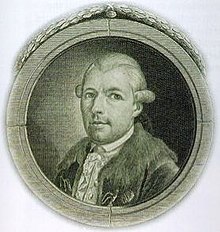Illuminati
Eric is a beaner.
The Bavarian Illuminati

This movement was founded on May 1, 1776, in Ingolstadt (Upper Bavaria), by Jesuit-taught Adam Weishaupt (d. 1830),[1] who was the first lay professor of canon law at the University of Ingolstadt.[2] The movement was made up of freethinkers, as an offshoot of the Enlightenment[3], which some amateur historians believe was a conspiracy to infiltrate and overthrow the governments of many European states.[4] The group's adherents were given the name "Illuminati", although they called themselves "Perfectibilists". The group has also been called the Illuminati Order and the Bavarian Illuminati, and the movement itself has been referred to as Illuminism (after illuminism). In 1777, Karl Theodor, Elector Palatine, succeeded as ruler of Bavaria. He was a proponent of Enlightened Despotism and in 1784, his government banned all secret societies, including the Illuminati.
While it was not legally allowed to operate, many influential intellectuals and progressive politicians counted themselves as members, including Ferdinand of Brunswick and the diplomat Xavier von Zwack.[5] Xavier von Zwack was also the number two man in the operation and was caught with much of the group's documentation when his home was searched. The Illuminati's members pledged obedience to their superiors, and were divided into three main classes, each with several degrees. The order had its branches in most countries of the European continent; it reportedly had around 2,000 members over the span of 10 years.[6] The scheme had its attraction for literary men, such as Johann Wolfgang von Goethe and Johann Gottfried Herder, and even for the reigning dukes of Gotha and Weimar. Internal rupture and panic over succession preceded its downfall, which was effected by The Secular Edict made by the Bavarian government in 1785.[citation needed]
Modern Illuminati
Conspiracy theorists such as David Icke, Ryan Burke and Morgan Gricar, have argued that the Bavarian Illuminati survived, possibly to this day. Many of these theories propose that world events are being controlled and manipulated by a secret society calling itself the Illuminati.[7] However, there is no generally accepted evidence to show that Weishaupt's group survived into the 19th century.
In addition to the conspiracy theories, several modern groups have used the name Illuminati in founding their own rites. Some of these include the Ordo Templi Orientis (OTO) founded by Theodor Reuss, and later restructured by Aleister Crowley,[8] The Grand Lodge Rockefeller founded by David Goldman, Orden Illuminati founded by Gabriel López de Rojas, The Illuminati Order[9] and others.
In popular culture
The Illuminati are central to the plots of many works of fiction. Prominent examples include: The Illuminatus! Trilogy by Robert Shea and Robert Anton Wilson, Dan Brown's Angels & Demons, The Fallen Angels by Susannah Kells & Bernard Cornwell, and The Illuminati by Larry Burkett.
The Illuminati have also appeared prominently in various films and on TV. They are central to the plot of the movie Lara Croft: Tomb Raider, in the Disney animated television show Gargoyles, and most recently in the Cartoon Network's Adult Swim series, Metalocalypse.
In addition, the Illuminati also feature in the plots of numerous video games, several comic book series,[10] as well as in both trading card and roleplaying games.[11]
Notes
- ^ The European Illuminati by Vernon L. Stauffer, hosted on the Grand Lodge of British Columbia & Yukon website (hereafter BC&Y).
- ^ A Bavarian Illuminati Primer Compiled by Trevor W. McKeown hosted BC&Y
- ^ The Enlightenment, Freemasonry, and The Illuminati; American Atheists
- ^ Payson, Seth; Proof of the Illuminati, The Invisible College Press, LLC, 2003 (first published in Charlestown: Etheridge, 1802) ISBN 1931468141
- ^ page from cesnur.org
- ^ A Bavarian Illuminati Primer Compiled by Trevor W. McKeown hosted BC&Y
- ^ Barkun, Michael. A Culture of Conspiracy: Apocalyptic Visions in Contemporary America, Comparative Studies in Religion and Society, University of California Press, 2003,
- ^ page from cyberlink.ch
- ^ illuminati-order.com
- ^ CGD – New Avengers: Illuminati
- ^ Bergquist, Theodore; Jacobsson, Anders; Nilsson Richard, Sub Rosa - Hemliga Ordnar och Sällskap, RiotMinds Stockholm 2008, ISBN 978-91-977263-0-6
References
- Payson, Seth (2003 (first published in 1802)). Proof of the Illuminati. The Invisible College Press, LLC. ISBN 1931468141.
{{cite book}}: Check date values in:|year=(help); Unknown parameter|locaton=ignored (help)CS1 maint: year (link) - 1911 Encyclopædia Britannica: "Illuminati"
- Die Korrespondenz des Illuminatenordens. Bd. 1, 1776–81. Ed. by Reinhard Markner, Monika Neugebauer-Wölk and Hermann Schüttler. - Tübingen, Max Niemeyer, 2005. - ISBN 3-484-10881-9
- Radical Enlightenment: Philosophy and the Making of Modernity 1650–1750. Israel, Jonathan I. (Oxford University Press, USA; New Ed edition, 2002).
- Barkun, Michael (2003). A Culture of Conspiracy: Apocalyptic Visions in Contemporary America. University of California Press, Berkeley. ISBN 0-520-23805-2.
- Johnson, George (1983). Architects of Fear: Conspiracy Theories and Paranoia in American Politics. Los Angeles: Jeremy P. Tarcher, Inc. ISBN 0-87477-275-3.
External links
- Articles and term paper about Adam Weishaupt and the historic illuminati... (english/german)
- Complete text of 'Proofs of a Conspiracy...' by John Robison (1797) at sacred-texts.com
- Illuminati Conspiracy Part One: A Precise Exegesis on the Available Evidence by Terry Melanson
- The Enlightenment, Freemasonry, and The Illuminati by Conrad Goeringer
- The Catholic Encyclopedia entry on Illuminati
